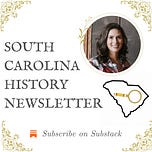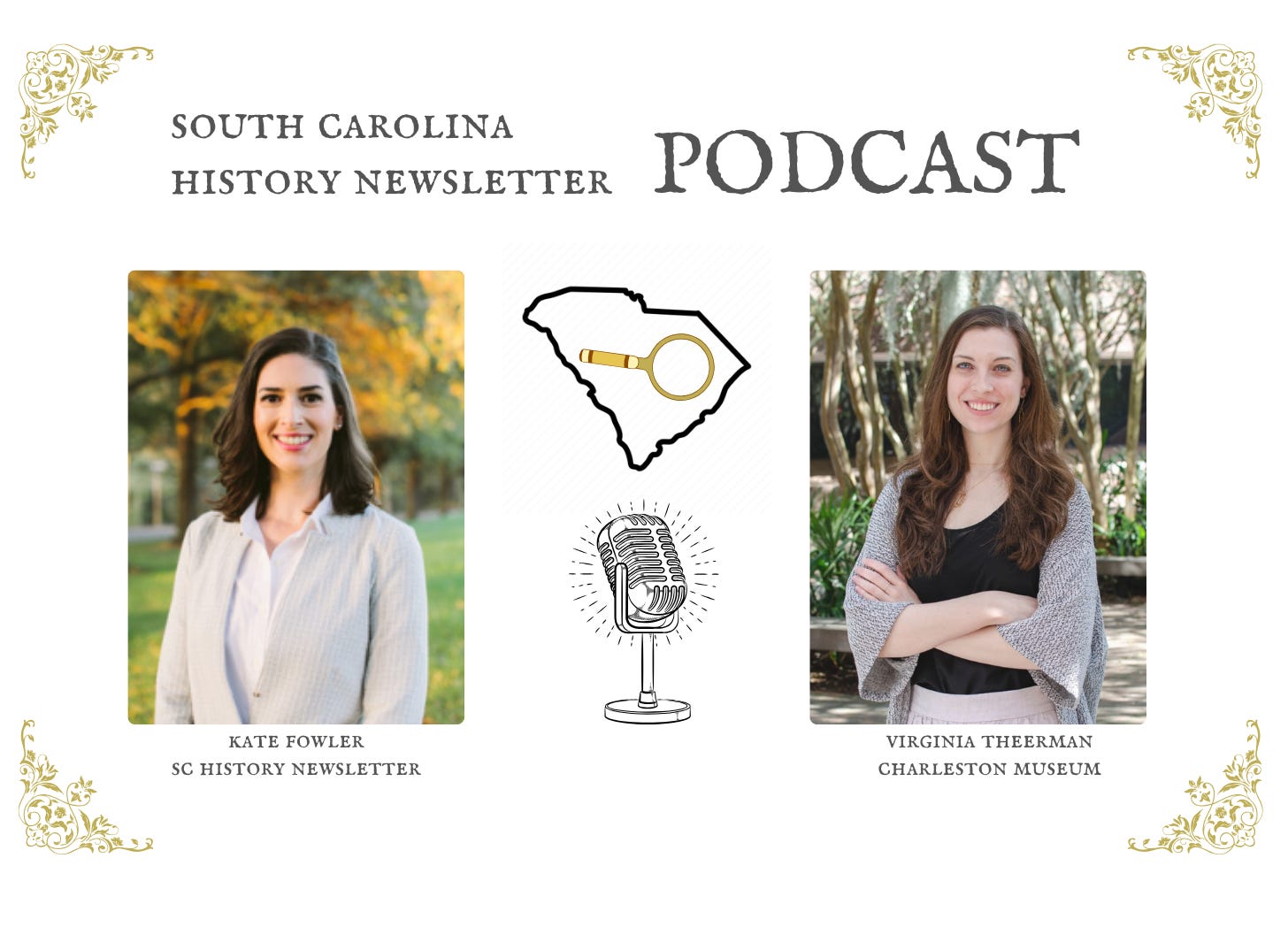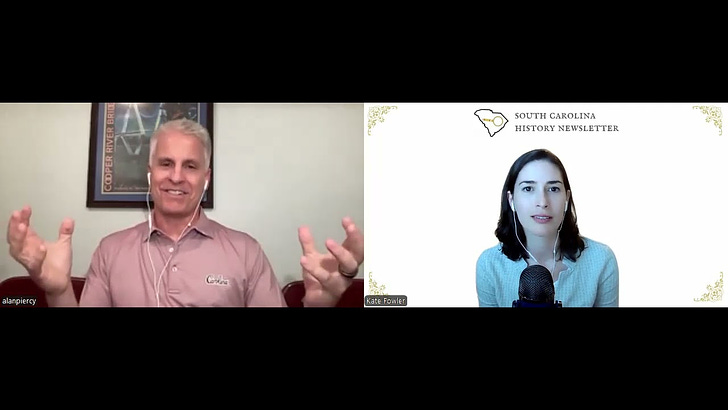This week, I was honored to interview Virginia Theerman, Curator of Historic Textiles, at the Charleston Museum for Podcast #3 of the SC History Newsletter!
Virginia Theerman, Curator of Historic Textiles at The Charleston Museum, holds a Bachelor of Science Dual Degree in Art History and Design & Merchandising, as well as a Master of Arts from Fashion Institute of Technology in Fashion and Textile Studies: History, Theory, and Museum Practice. With prior experience at the Robert and Penny Fox Historic Costume Collection, the Metropolitan Museum of Art, and the Museum of Modern Art, she joined The Charleston Museum in April of 2020. Theerman cares for a collection of approximately 10,000 costume and textile objects, and her work encompasses the realms of traditional curatorship, as well as exhibition design and public programming. Her recent research subjects include testing for arsenic content in textile dyes, and the Rana Plaza Factory disaster of 2013.
You can listen to the interview above, but also note that Virginia also takes us through a beautiful online presentation with images, that you can watch on YouTube here:
If you would like to READ the interview, you can toggle to the transcript of the episode above at the top of this page (see image below to help):
And here are time stamped sections of our interview, including reader questions:
3:02 — Kate introduces Virginia Theerman, Curator of Historic Textiles at the Charleston Museum
6:29 — Virginia Theerman discusses her role
11:23 — Virginia describes how historic textiles arrive in their collection
12:28 — Virginia discusses “unicorn” textile acquisitions for the museum
15:20 — Virginia describes her top 3 most exciting projects she has worked on as the Curator of Historic Textiles at the Charleston Museum
19:54 — Virginia talks about the “gem” of the textile collection, the “Robe a la Francaise” worn by SC Founding mother Eliza Lucas Pinckney
25:33 — Virginia talks about the life and legacy of Eliza Lucas Pinckney
37:18 — Reader Question #1 from Alan P. from Raleigh, NC! “I’m curious as to how people typically dressed in Antebellum days. Was a dress like the one you highlight used only for certain events (balls, etc), and how formal was life day to day for this monied (but rural) class? How many outfits - dresses, etc, might one possess on a plantation, and where were they purchased? Charleston?”
38:00 — Virginia answers Alan’s question
47:14 — Virginia discusses how clothing in the 18th century was repurposed in various interesting ways
49:40 — Virginia describes what it would have been like to go to a dressmaker’s shop in Charleston in colonial times
52:51 — Virginia discusses the importance of clothing as a part of our identity
54:13 — Virginia discusses her impressive career path from Drexel University, to the Fashion Institiute of Technology, the Metropolitan Museum of Art, MoMA, (and more!) and how she ended up at the Charleston Museum!
63:04 — Virginia shares the exhibition that originally inspired her to work with historic textiles
69:32 — Virginia discusses her upcoming exhibit at the Charleston Museum “Lovely & Lethal: Killer Fashions from the collection”
77:24 — Virginia describes a very sad but “breakthrough” moment when she realized she was handling the apron of an enslaved child in the museum’s archive
84:29 — Virginia describes what she hopes people take away from their experience at the Charleston Museum
86:27 — Reader question #2 from Randall F. in Greenville, SC! “What is a unique textile that you feel contains the greatest historical significance in the Lowcountry?
86:43 — Virginia gives her answer to Randall’s question above and discusses a prominent African American dress designer in Charleston, Madame Seba
90:04 — Virginia discusses a historic quilt that depicts everyday life in Charleston in the early 19th century
96:18– We do our “Carolina Questionnaire” with Virginia Theerman
108:26: Thank you & farewells!











